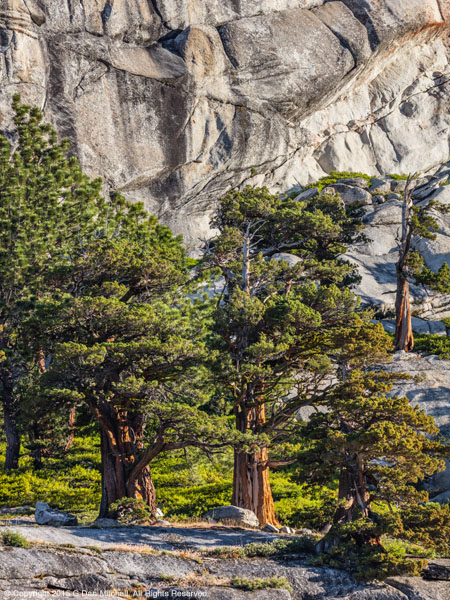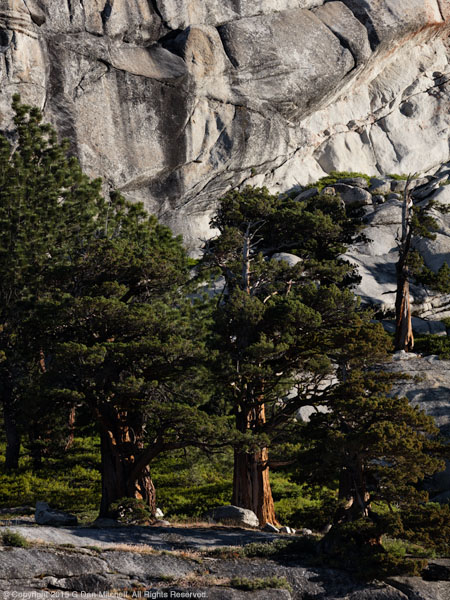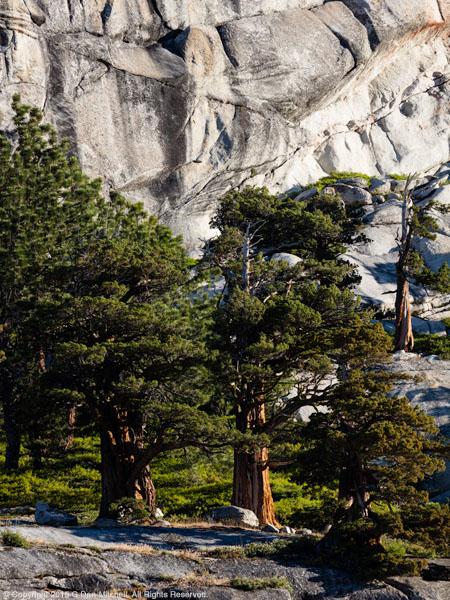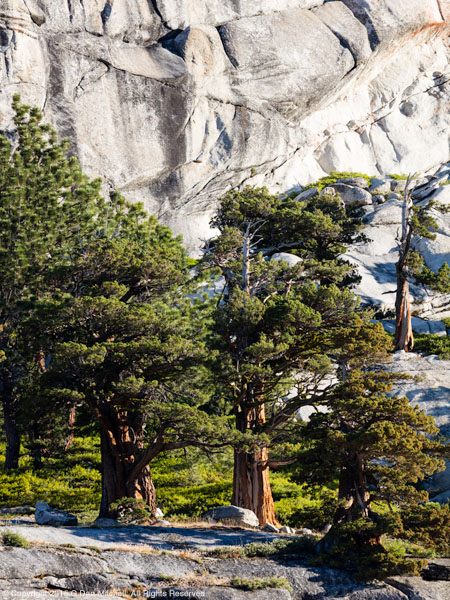Over the past few weeks the arguments about “photoshopping” and “manipulation” have again come to the fore, this time as the result of the so-called “scandal” around alterations to some photographs by Steve McCurry. The discussions have evolved in all sorts of ways — as they typically do — some of which I regard as unfortunate: pronouncements about which techniques are “ethical” or “unethical,” declarations that photographs must be “true,” the usual stuff about “getting it right in the camera,” and more. In my view, much of this is naive and unrealistic.

At the heart of the issue are some problematic notions, including the following.
- The camera sees accurately, and any modification of what comes out of the camera subverts the camera’s truth. Some assume that the way the machine “sees” is more accurate than the way our eyes and brains see, and that it is the preferred mode of seeing. There are huge problems with this assumption, beginning with the fact that people and cameras see in very different ways. (I’m more interested in how people see.) The eyes scan a scene, adapting to localized elements of the subject, and the full image never exists aside from a kind of mental abstraction of it. The camera non-selectively records light levels from the entire scene at one instant, all with the same “settings.” There’s much more to this, and the subject is far too big to fully deal with here. Suffice it to say that your eyes/brain are not a camera, and this makes a very big difference.
- Modifying photographs in post-production (or “post”) makes them less honest and accurate. Some think that modifying what comes from the camera is dishonest. In fact, if the way that humans see is our model for accurate seeing, as I believe it should be, the way the camera sees is often quite inaccurate. (Who sees in black and white or telephoto or with tilt/shift adjustments or with colored filters or constrained to rectangles?) In order to render an image that is more faithful to the way humans see, it is often necessary to massage the image that comes from the camera.
- The use of techniques for “manipulating” or “photoshopping” photographs is unethical. Some take the position that “manipulating” images is wrong, but it seems absurd to make such a blanket statement. If your photograph was slightly underexposed, how is it unethical to increase the brightness in post so that it looks exactly as it would have looked with a slightly longer exposure? How can it be OK to use a telephoto lens but not OK to crop in post? Why would it be OK to use a tilt/shift lens but not to adjust perspective lines in post? Are the “rules” the same for photojournalism and for photographic abstractions?
People often want to see this set of issues as a binary, where things are either right or wrong, but it is nothing like that at all.
Before I offer an example, I would like you to try an exercise — and doing it and considering the results is very important for understanding what follows. Go look at some subject in the bright sun that includes some shadows. As you do, look at the brightest areas in the scene, and consider whether you can see any details, however faint, in those brightest areas. You should be able to. Now shift your gaze to a shaded area. You should be able to see some detail there, too. (Your pupils likely closed down a bit when you looked at the bright area — in photographic terms, you used a smaller aperture — and they likely opened up a bit when you looked at the shadow area.)
This presents a classic photographic problem. Virtually no digital camera and no film can handle the widest dynamic ranges of common scenes that we photograph. Producing a realistic photograph of such scenes requires “manipulation,” and without it the scene will not correspond at all to what we see. Here is a photograph of one such scene — the same photograph seen earlier in this article.

This is not, of course, exactly what you would see if you arrived on this scene. You might be there in different light or at a different time of day. But the chances are that you would see more or less what I saw: a small stand of sturdy trees, the texture of their reddish-brown bark,the lines and curves of their forms, the color and texture of granite, some details in even the darkest shadow areas and on the brightest granite, the striking green of the foliage, and so forth.
That is not, however, what the camera recorded. In fact, I made three exposures of this scene, mainly because I recognized that there was a tremendously large difference between the brightest areas of light reflecting on granite (above the trees on the right side) and the areas of deepest shadow. For a photographer using digital media, the hardest boundary is at the bright end of the spectrum— expose in such a way that they are too bright and all detail is lost, and in a way that cannot be repaired. So my first exposure avoided overexposing the brightest highlights. (The area of light granite at upper right is the brightest area of this scene.)

This dark exposures maintains all of the texture in the brightest areas of the granite face. However, this came at a cost — the needles of the trees and the ground foliage have become quite dark and dull, and areas of shadow have lost all detail and look almost uniformly black. While this is what the camera “saw,” it most certainly does not correspond to what I saw.
My second exposure was a bit longer than the first, making the whole scene just a bit brighter, as follows.

This decreases the problem with the shadows, though they are still too dark and the shadow detail visible in the “straight out of camera” (SOOC) raw file is considerably less than what I saw with my eyes. But even this improvement is beginning to have a cost in the highlights — that bright wedge of granite above the trees on the right side of the frame is becoming almost pure white and losing detail. In the end, even the best single-exposure compromise has problems.
The third exposure was even a bit longer, since I hoped to capture a bit more shadow detail of the sort that I saw when I looked at the shadows beneath the trees.

This improves some of the darker areas — notice more realistic detail in the needles of the trees, the ground-hugging plants, and the foreground granite. However, the situation has continued to deteriorate on the background vertical cliff, where most of the rock is too light, looking washed out and flat, and some areas have lost all detail and become essentially pure white.
Clearly, there is no exposure that results in an unprocessed version of the scene that corresponds to what I saw. Think back to my thought experiment earlier in this article, and the scene that you looked at. If it had similar shadows and highlights, there was no area in the scene where your eyes were unable to discern any detail — no completely blocked shadows and no blown out highlights. Clearly, the way the camera “sees” here does not correspond to the way we see, and the camera therefore does not produce an accurate version of the scene as we saw it.
In order to produce a photograph that is more faithful to what we saw originally, it is necessary to “manipulate” the image during the post-processing phase. (For those who imagine that this is due to the photograph being digital, the same thing is necessary in film photography.) The goals will include:
- retaining details in the darkest shadow areas and lightening them a bit.
- retaining details in the brightest highlight area and darkening them a bit.
- adjusting various intermediate tones to compensate and to “balance” the image.
- making some alterations to color balance — for example, decreasing the intensity of blue tones in some shadow areas.
The full picture is even more complex. Consider that when our eyes are drawn to a central subject our visual system gives less prominence to surrounding secondary areas. (You can confirm this by doing your own visual experiment — stare at something, switch your gaze to something else, and while continuing to look at the second subject consider how the visibility of the first subject changed.) Our visual system does something similar with brighter and darker areas. We are also not able to focus simultaneously on near and far subjects.
All of that aside for now, here is a final version of the scene, one that conforms more accurately than any of the “SOOC” images to what I saw and to our expectations. We can see into the shadows. Bright areas retain some detail. The unnatural-looking blue tones of the shadows have been controlled. The effect of light shining on the foreground trees has been maintained by selectively increasing brightness.
All in all, the “manipulated” version of the photograph is the most honest version — unless your object is to conduct a controlled test of a camera’s exposure system!
Finally, this is far from the whole story. I have ignored issues such as cloning and exposure blending and, even more importantly, the very question of the photographer’s goal — if photography isn’t merely attempting to record things, what is the role of creating and expression in the process of creating photographs? How does subjective truth differ from objective truth in photographs, and which do we prefer?
 G Dan Mitchell is a California photographer and visual opportunist. His book, “California’s Fall Color: A Photographer’s Guide to Autumn in the Sierra” is available from Heyday Books and Amazon.
G Dan Mitchell is a California photographer and visual opportunist. His book, “California’s Fall Color: A Photographer’s Guide to Autumn in the Sierra” is available from Heyday Books and Amazon.
Blog | About | Flickr | Twitter | Facebook | Google+ | LinkedIn | Email
All media © Copyright G Dan Mitchell and others as indicated. Any use requires advance permission from G Dan Mitchell.
Discover more from G Dan Mitchell Photography
Subscribe to get the latest posts sent to your email.

Great article Dan that addresses the “age-old” question- is that what the scene really looked like?
Keep up the good work.
Len
Well done. As you stated so well, one can not talk about the image without the reference of the human eye in all its complexity, especially when it comes to light and dark. The general public does not take this into account when asking questions about “manipulation”. As I see it, a photograph must be finished in such a way as to allow the photographer to represent the time at which the capture was made. This is the only way that an image can possibly convey the emotion at the time.
Thanks, Doug. This whole issue is, as you clearly understand, not nearly as simple as lots of folks imagine it to be — and the subject is worth more than the superficial consideration sometimes afforded to it.
Dan
Nicely said. Some of my most financially successful images often get a response something like, is that what it was really like? My best answer is, yes, at least at the moment I was “manipulating” this print. Many of my prints have different versions. This speaks to an emotional response to viewing any image in any medium or in reality. My emotions are always changing and will never match those of any viewer. We can never truly know how any other individual “sees” any given image.
Thanks, Rex. My interest in photographs is not so much in their potential for record keeping as it is in expressing the photographer’s way of seeing and orientation to the subject.
Dan